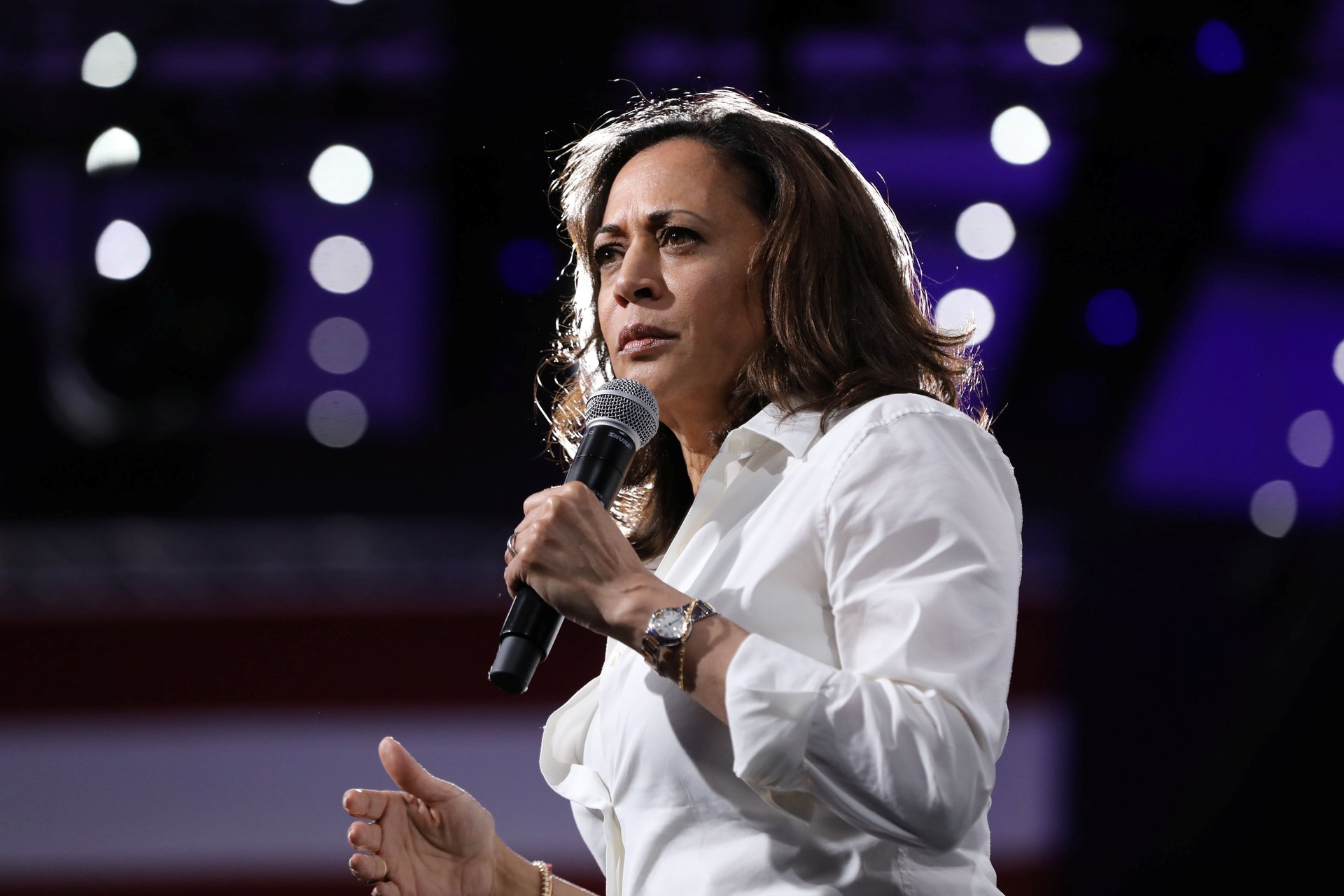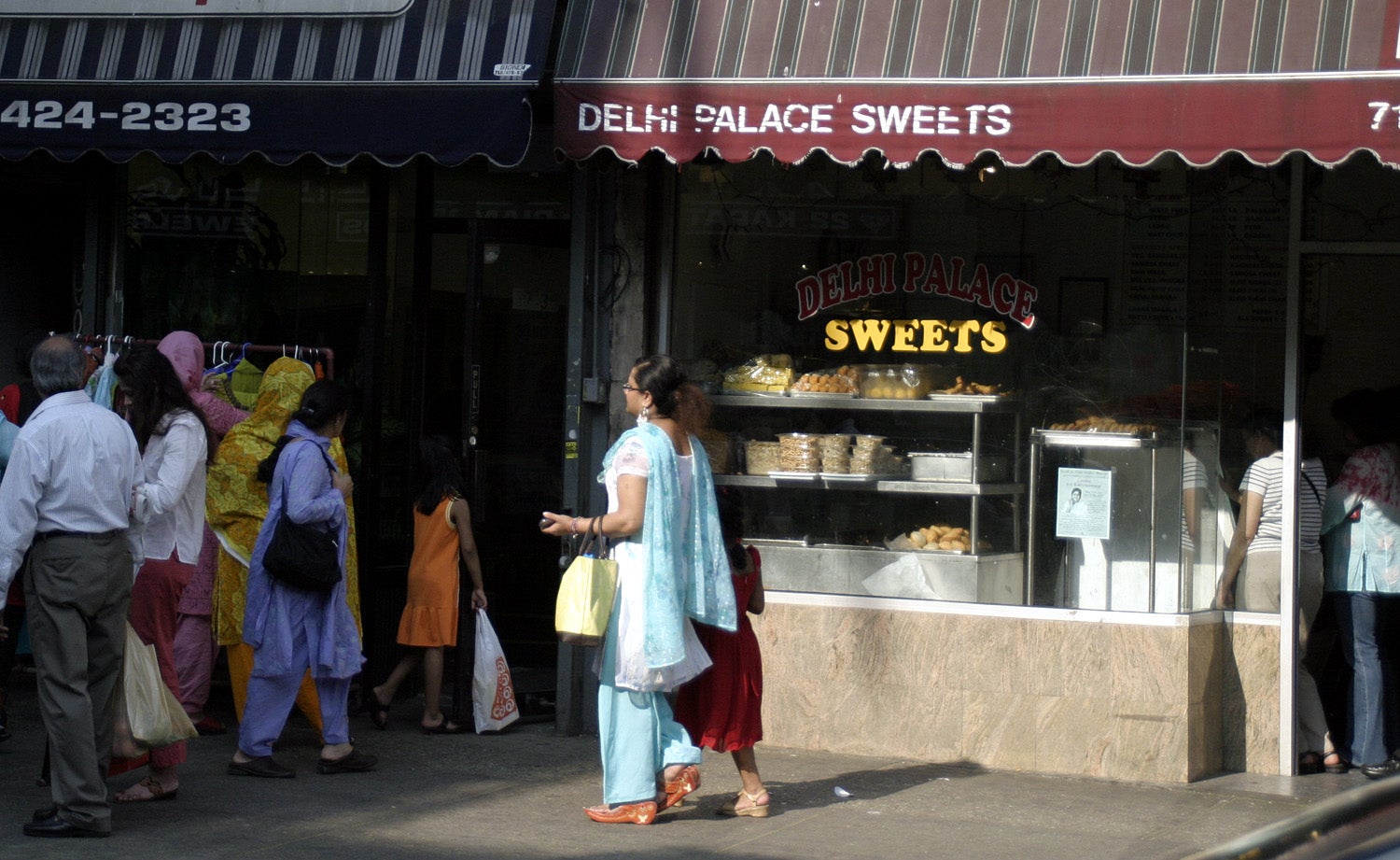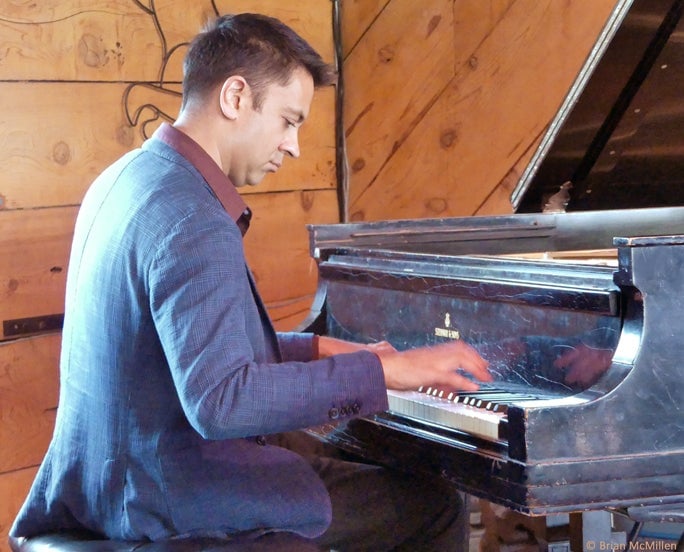From the fringes to the White House: How Indian Americans made their way into US politics
On Aug. 15, 1981, the very first India Day parade in US history rolled down Madison Avenue in Manhattan. Just a few simple floats traversed only 20 blocks before everyone dissipated back into the subways. But Zubin Mehta showed up—the conductor of the New York Philharmonic was the one bona fide desi celebrity of the time—as did Mayor Ed Koch, who told the gathering why he liked Indian Americans: “They are middle class, hardworking and devoted to this city and this country. They give us their culture and their taxes—and their wonderful restaurants.”


On Aug. 15, 1981, the very first India Day parade in US history rolled down Madison Avenue in Manhattan. Just a few simple floats traversed only 20 blocks before everyone dissipated back into the subways. But Zubin Mehta showed up—the conductor of the New York Philharmonic was the one bona fide desi celebrity of the time—as did Mayor Ed Koch, who told the gathering why he liked Indian Americans: “They are middle class, hardworking and devoted to this city and this country. They give us their culture and their taxes—and their wonderful restaurants.”
Applause followed the endorsement from the city’s most powerful pol (a few weeks later he topped both Republican and Democratic primaries and easily won re-election with bipartisan support), and there were also several self-congratulatory whoops.
I remember that detail most vividly because it was me making the noise.
A few months earlier my parents had bundled up my younger brother (he was eight, and I was 13) from Bombay (now Mumbai), and brought us to New York where my father had a new assignment. Home felt achingly distant. No one had any clue about the world that we came from. There was prejudice, but I was much more rankled by ignorance. “Hizzoner” mouthed meagre platitudes, but they made me exultant for the rest of the day.
Those who did not experience it can’t imagine just how isolating the Indian-American identity was until critical demographic mass began to accumulate in the 1990s. To a large extent, outside tiny pockets, that hyphenated option didn’t exist in the first place. The “old country” was irrelevant to US interests and invisible in popular culture. You couldn’t stay in touch even if you wanted, because it was hugely expensive to call overseas, and there was zero media overlap.
Growing numbers
In its account of that pioneering India Day, the New York Times noted, “According to the 1980 census, which listed ‘Asian Indians’ as a separate ethnic category for the first time, there are 361,544 Indians in the United States.” Those numbers proceeded to skyrocket: 1 million in 1990; 2 million in 2000; and over 4 million today (with another estimated 500,000 illegals).
For some eye-widening perspective, there are now over 700,000 Indian Americans in and around New York City alone, and an additional (conservatively estimated) 700,000 have returned to live in India.
That last number includes members of my family, who traversed the gamut: arrival and assimilation in the new country, then regrowing roots in the original point of departure. Thomas Friedman is so wrong about many things, but his dictum about the flat world applies here: the Indian American dream can be—indeed is—pursued with equal effectiveness in Bengaluru or Boston, Portland or Panjim.
In this way and many others, the community has wrought almost unbelievable annals in the history of migration. But no one could have anticipated this moment, playing out with every eyeball in the world swivelled in her direction. Kamala Harris is on the threshold of the White House. An Indian American has broken through. Thirteen-year-old me is non-stop-whooping. If only Koch could hear me now.

In his vivid, outstanding This Land is Our Land: An Immigrant’s Manifesto, Suketu Mehta recalls his own family’s departure from Bombay to settle in Jackson Heights in the New York City borough of Queens in 1977. “At McClancy, the brutal all-boys Catholic high school where my parents enrolled me, my chief tormentor was a boy named Tschinkel,” he writes. “He had blond hair, piercing blue eyes, and a sadistic smile. He coined a name for me: Mouse. As I walked through the hallways, this word followed me: ‘Mouse! Mouse!’ A small brown rodent, scurrying furtively this way and that. I was fourteen years old.”
Mehta was assaulted, but when he complained to the principal, “I was told that such things happen. It was within the normal order of the McClancy day. Four decades later, another German American bully from Queens became the most powerful man on the planet. The 2016 election particularly struck home for me. Donald Trump is like the fathers of the boys I went to high school with. He grew up in Jamaica Estates, then a gated white island in the middle of the most diverse county in the nation. That explains everything about him, his fear and hatred of people different from him.”
This is acutely perceptive, and I can relate in full measure.
My parents had also moved us to Queens, although some distance up the boulevard from Mehta in Forest Hills. There, I also attended private school—although mine was mercifully co-educational—which was similarly filled with plenty of people like Trump and his family. In this case, some of them were actually his family, because Fred Trump was the dominant figure on our board of trustees, and the future president himself attended awhile, before being kicked out and sent to military school.
Racist comments
If there was one place in the US where being Indian wasn’t almost entirely solitary in 1981, it was Queens. On the very first day of school, I heard several stupid racist comments, got flustered when someone made a “yo mama” joke, drew mocking laughter when I stood up to answer a teacher’s question, but also discovered another Indian in my class.
Pankaj Surana and I found immediate solidarity in standing up for each other, and have remained committed friends ever since, including life choices tacking uncannily together, such as choosing to raise our Indian American sons (I have three, he has two) in India. As you would imagine, we have been continually talking about Harris, in wonder at this unlikely moment.
“My parents emigrated to the United States in 1968, when I was six months old, and the US was a very different place,” said Surana, “My father recounts that if he met an Indian on the street in New York City they would not pass by without stopping and asking each other where they were from, and why they were here. There was only one Indian grocery store, and there was only one Indian restaurant in all of the city. We were so much on the fringes of mainstream American society, that one could never imagine an Indian American attaining any real political power.”
Harris’s ascendance, he said, is a matter of immense pride. “It signals to all children of first and second generation Indians that their cultural duality is something to be proud of, where no exclusionary choice needs to be made, and both cultures can be embraced and coexist within them as a respected strength,” said Surana. “I am excited that through her, other Indian Americans will be inspired and the connections between our countries will become even deeper.”
In the days that Surana and I walked home together every day, the racial divide was sharply apparent, even in Queens. There was “white radio” and “black radio” and no such thing as world music. The year we met—still 1981—MTV was launched for the first time, and adamantly refused to play Michael Jackson. It was amply clear to Indian Americans that there was only one road ahead, which was the one proffered by Ed Koch and his ilk, to shed as many signifiers of difference as possible via “the melting pot” in order to achieve acceptance as “regular Americans” by the majority.

Vijay Prashad—who arrived in the US from India in the mid-1980s—has written about this genuinely Faustian bargain with great insight in his 2000 masterpiece, The Karma of Brown Folk. He pinpoints the trade-off as based on “the desire not to be seen as fundamentally inferior to those who see themselves as ‘white’ and superior. To be on a par with or not at least beneath these people, desis, like other subordinated peoples, revel in those among them who succeed in white terms…To take pride in these figures is a hallmark of the desire to say to someone, ‘I am worthy, I am worthy, respect me.’”
That context makes the continued rise of Harris so intriguing, because of her mother’s and her own choices to reject the more obvious trappings of “white privilege”—that were always available to her—in favour of solidarity with American “blackness.”
Remember that when she graduated high school—in 1981—her father was tenured at Stanford, and she would have walked in as his legacy. Faced with similar options, Obama went to the Ivy League at Columbia (in 1981), but Harris chose the historically black Howard University, joined the oldest African American sorority, then headed the Black Law Students Association at her law school. These are all highly consequential signifiers.
Earlier this year, after the murder of George Floyd, and the worldwide eruption of the Black Lives Matter movement, the brilliant Indian American pianist and composer Vijay Iyer—in addition to being one of the foremost jazz musicians of our times, he’s professor of the Arts at Harvard University—posted on Facebook: “I have seen many posts, workshops, webinars, and articles from Asian Americans calling for ‘conversations about anti-Blackness in our communities.’ But it is profoundly rare for the most privileged Asian Americans—Indian Americans among them—to truly acknowledge our own complicity with the powerful, to check our own privilege, or to reckon with the actual harm that we might be doing by sitting in continued comfort and being slow to take action.”
Anti-Black racism
I wrote to Iyer to find out more, and he told me, “It’s no secret that the majority of Indian Americans are anti-Black, anti-Muslim, casteist, colorist, and elitist. It’s noteworthy that the most prominent Indian Americans have included corporate marauders like Sundar Pichai and Indra Nooyi, right-wing politicians like Bobby Jindal and Nikki Haley, and at least one overtly racist political loudmouth (Dinesh D’Souza); that caste discrimination has recently been revealed as perpetuating in the US, in a lawsuit filed by the state of California against Cisco; and that many Indian immigrant families discourage any intermarriage except with white people. There may be greater class diversity among Indian Americans than there was when we grew up [and] I think that in response there has been a new critical mass of younger progressive Indian Americans who find niches for themselves in community organising, the arts, or some combination. But I don’t tend to see such people ‘seeking inclusion’ or ‘guidance’ from Black people. If they do, they tend to maintain the upper hand.”
By choosing jazz (he previously spent 15 years studying western classical music), Iyer—rather like Harris—entered the lifeblood of an African American cultural, social and intellectual landscape. That choice was just as rare as when the Democratic vice presidential candidate made it (he’s seven years younger).
For my part, I certainly didn’t see any inkling of its possibility when I went to college in 1986. After I tried to join Ujamaa, Wesleyan University’s Black Student Union, its officeholders politely took me aside to say that it wasn’t for me. There was no similar group for Asians, let alone Indians.

One of the people who heard my complaints at the time was a childhood friend, Sunaina Maira, whose own Indian American experience was just beginning at Wellesley College. She is now an acclaimed professor of Asian American studies at the University of California Davis, who has spent considerable time analysing the desi diasporic culture. I checked in with her to find out what she was thinking on the cusp of this historic election.
“The US state has established a structure for racial inclusion—on its own terms—that is in part a response to the civil rights struggle and the militant antiracist and anti-war organising of the 1960s-’70s that it aggressively suppressed,” she said. “While the expansion of electoral representation of communities of colour and immigrant communities is extremely necessary, and incredibly important, many question if the limitations of the two-party system in the US have led to real structural change. As inequality has deepened in the US, ‘diversity’ is touted as the solution without any real changes in the underlying structures that limit the life chances of poor communities or people of colour.”
Thinking back to our time in college, Maira said, “I don’t know that I understood this myself as an immigrant student in the US three decades ago, but learning about the shift from a politics of redistribution of resources to a politics of recognition, for the sake of recognition, makes one sceptical of what this promise of racial diversity really will mean. It is indeed a significant event, given the historic exclusion of South Asians in the US from immigration, including citizenship, and the experiences of racial profiling, surveillance, detention, and deportation of South Asians (Muslims and Sikhs especially) since 2001.”
She added: “It does matter that Harris is a multiracial woman and perhaps it will spur conversations about anti-Blackness and multiracial identity among desi Americans [but] it raises many questions as to whether people will treat like this as an ‘Obama moment’ and uncritically celebrate the [breakthrough]. It is simply not enough that Harris is a woman, or that she is South Asian American. It is time for a real political reckoning in the US.”
Vivek Menezes is a photographer, writer and co-founder and co-curator of the Goa Arts + Literature Festival.
This post first appeared on Scroll.in. We welcome your comments at ideas.india@qz.com.